A few weeks ago, I released an episode of the GWA Podcast on the great painter, Sylvia Sleigh (1916–2010). The next day, I received an email from “PJ Rosano”.
I enjoyed your podcast on Sylvia Sleigh very much. Hearing you speak in such high terms about her paintings is wonderful.
Sylvia was my friend and mentor for nearly 40 years. She was an amazing person and I still miss her dearly. We met by absolute chance and it turned into one of the most important relationships and friendships in my lifetime.
“PJ Rosano” is Paul Rosano, Sleigh’s most frequent sitter. She painted him in the nude, clothed; lying down, standing up; eyes closed – in a dreamworld akin to Millais’s Ophelia – and looking straight at us. They’re some of her best paintings, and they still feel groundbreaking today. Here’s Rosano in a reclining, Venus-like pose:
Of course, I wrote back immediately (much like this scenario), with a flurry of questions: What was she like? How did you meet her? Do you remember the moment? How old were you/she? What was it like sitting for her? What did she teach you?
Sitters of artists have long fascinated me. Not just because they’re the subject – and I’m intrigued about what that feels like – nor because of the intimate relationship they have with a painter, but how they can get us to think differently about looking at art: through the eyes of the subject, which can give a different, more personable approach.
For anyone around in NYC this Friday, 9.30am, I will be interviewing people who sat for Alice Neel and Marcia Marcus at Lévy Gorvy Dayan (in an exhibition that features Sleigh), and painters Jenna Gribbon and Wangari Mathenge.
But now for a different take on Sylvia Sleigh. Love Katy
KH: How amazing to hear from you. Thank you so much for your message! Sleigh's paintings of you are extraordinary. I have so many questions. What was she like?
PR: Nice to hear from you, too.
Sylvia was a charming and warm person. She was loving and supportive of her
friends, and she had a wonderful sense of humour. But she was also tough and stood up to anyone who she didn’t care for. She fought fiercely for women artists and knew first-hand the discrimination they faced.
We were from very different backgrounds and there was quite an age discrepancy but we also had a lot in common and we became fast friends. We talked continuously on myriad topics while I was sitting for her. She was perhaps the only painter who actually did talk with me while I posed.
She said she ‘had to like you to paint you’, although I don’t doubt she painted some people she didn’t like all that much. A simpatico relationship was much better for her work, she said. I suppose we disagreed about some things, but not many. We were both liberal leaning so we agreed on most political and world topics.
She read the [New York] Times each day usually before I saw her. We would talk about an item in the news and she would always have an interesting take on it. I usually sat an entire day from about 9-10 in the morning until 4 or sometimes later in the afternoon. We would break for lunch around 1 and she would make me something wonderful every day because she was an extraordinary cook.
She was very positive. I once saw a canvas of hers damaged with a blunt hole while we were on a break and she at once knew what to do and started to repair it. She knew she could completely restore it without anyone except the two of us being the wiser. And she did.
How did you meet her? Do you remember the moment? How old were you/she?
We met at the School of Visual Arts on East 23rd St. between 2nd and 3rd Avenues in Manhattan. It was in January, 1973, Sylvia was filling in for Alice Neel at an all-day drawing workshop. The model didn’t show up for some reason and the fellow who booked models at the school called at about 9 a.m. to see if I could fill in.
I lived on 22nd St. but on the West Side. I remember it was snowing. I hopped a bus and made it to the school in about half an hour. Sylvia barely talked to me during the workshop, which went to about 4, but as soon as it was over she asked me if I would sit for her. Because it was snowing I was wearing one of those long Afghan coats with a Mickey Mouse T-shirt, jeans, and boots from Granny Takes A Trip; purple with pink stars. I believe she was kind of struck by that. I said yes I could.
I was 23 and I didn’t know how old she was, but as it runs out she was about 56, although she looked much younger. When I called her I found out she was just around the corner on West 20 St. between Eighth and Ninth, very convenient. I started sitting for her within a week. Once I started with Sylvia I didn’t sit privately for anyone else and soon stopped modelling at the schools.
What were you doing in New York?
I was living with my girlfriend in a studio apartment on W. 22nd and Ninth and was in a band called Island with two musicians I had worked with in Connecticut in the band Pulse. Pulse had cut and released an album in 1969. It’s still around, very much a cult classic, soon to be re-released. They were renting a loft in the 30s between Fifth and Sixth, garment district. We rehearsed there. We were writing a lot of songs and trying to get a record deal, but not playing out live. Fairly quickly we landed some studio time through the Glotzer-Grossman management office by actually auditioning in their offices with acoustic guitars and a conga drum.
It was all coordinated by their publisher Sam Gordon. My girlfriend was in the Nikolai-Louis dance school and was working part-time at the clothing store Countdown, very trendy, on Greenwich Avenue (there was one on the upper East side also, 2nd avenue in the 60s).
We recorded 11 tracks, eight at the old Capitol Records studio in midtown, and three at Blue Rock Studios in SoHo (not there any longer). Todd Rundgren helped us out by engineering the session at Blue Rock, arranged through Sam Gordon. He was managed by Glotzer-Grossman. The tapes came out great but we never sold them to a record company. I released them on all the streaming services about 15 years ago. They are on Spotify and such and get a surprisingly substantial amount of play. But artists are getting screwed by the services as they pay hundredths of a cent for a play.
Why do you think she was drawn to you?
Basically after we met at her house and I started sitting, she revealed I was her type. Classical features, my southern European looks and skin tone, particularly my Aquiline nose, reasonably trim and fit and my long hair, which was kind of unique for her. And we got along very well.
What was the first painting she did of you, and the last? Did anything change over time?
The first painting was Paul Rosano Seated Nude on her black leather Eames chair with a white lambskin throw under me. It went very smoothly and as I’ve said we started to talk non-stop. She talked while she painted, sometimes going silent but not often. About halfway through that painting she started talking about another painting she wanted to do of me, which became Paul Rosano Reclining, where I’m lying on the floor on her red eider down spread and her perspective is from above. This was not suggested by me lying down on breaks. I didn’t lie down on breaks. I either stood or sat on her couch, which was in the sitting room No, this was her idea. We may have tried it out during a break but it was all something she conceived. That was early 1973. The last probably By The Fire, early 1980s.
I was in living in New York for about the first two years until perhaps 1975, then I moved back to Connecticut. When I could, I took the train into New York and usually stayed three days and two nights with Sylvia and Lawrence, and we worked for those three days. Once I started working more steadily in nightclubs I couldn’t come into New York very much. When I started the band Napi Browne, which was late 1976, I didn’t sit for her at all. There was just no time. By The Fire came after the band broke up.
Did she always plan the composition before you arrived, or when you arrived?
Usually, she had ideas for her paintings beforehand, actually for a long time building up to when she started one. As I mentioned, she often talked about the next painting she wanted to do while she was working on another. We sometimes got together and improvised what she wanted to do but it wasn’t that often. That would have been for drawings, not paintings.
Where did she paint you - her house?
Yes, I only posed for her at her house. For the first couple of years in her sitting room on the first floor, which had extraordinary light from two floor-to-ceiling windows. Then she converted an upstairs bedroom, which was part of an apartment she rented, into a studio. It was fairly large. I would say about 25’ x 15’ and it had the same light as her sitting room with high windows also. Imperial Nude and its accompanying reclining painting on the same sofa, Lilith and some drawings were done in the studio.
Why do you say you were from different backgrounds, what was yours? What do you think you bonded over?
Well, she was from Wales born about 30 years before me. She had a tough upbringing and didn’t get to start doing what she really wanted until she had been forced into other professions and a marriage that didn’t work. I had a typically American suburban upbringing that was then derailed by my love of music. I also had parental problems, maybe not quite like Sylvia’s. I had very little support from my parents about a music career. So, I guess we had something in common there. That may have worked into our bonding. And then we were very sympathetic to one another in our views and beliefs.
Did she ever talk about England?
She did. Too many conversations to go into here.
How do you feel looking back on these paintings now? They're so ‘70s...
I love them all. It’s kind of surreal to think I was part of it. I am shocked by how conservative our society has become and would have thought just the opposite back then, when New York was so open and free and liberal.
What did she cook for you?
She made wonderful salads and soups for me at lunchtime. She would actually melt chocolate from a Cadbury bar to make hot chocolate for me and my wife Lynne.
What advice did she give you?
She advised me and gave me guidance in many areas but I’m not going to go into that here.
Thank you for reading this Substack. Happy GWA’ing! If you think someone else might enjoy this too, please spread the word. If you have any feedback, please leave a comment.






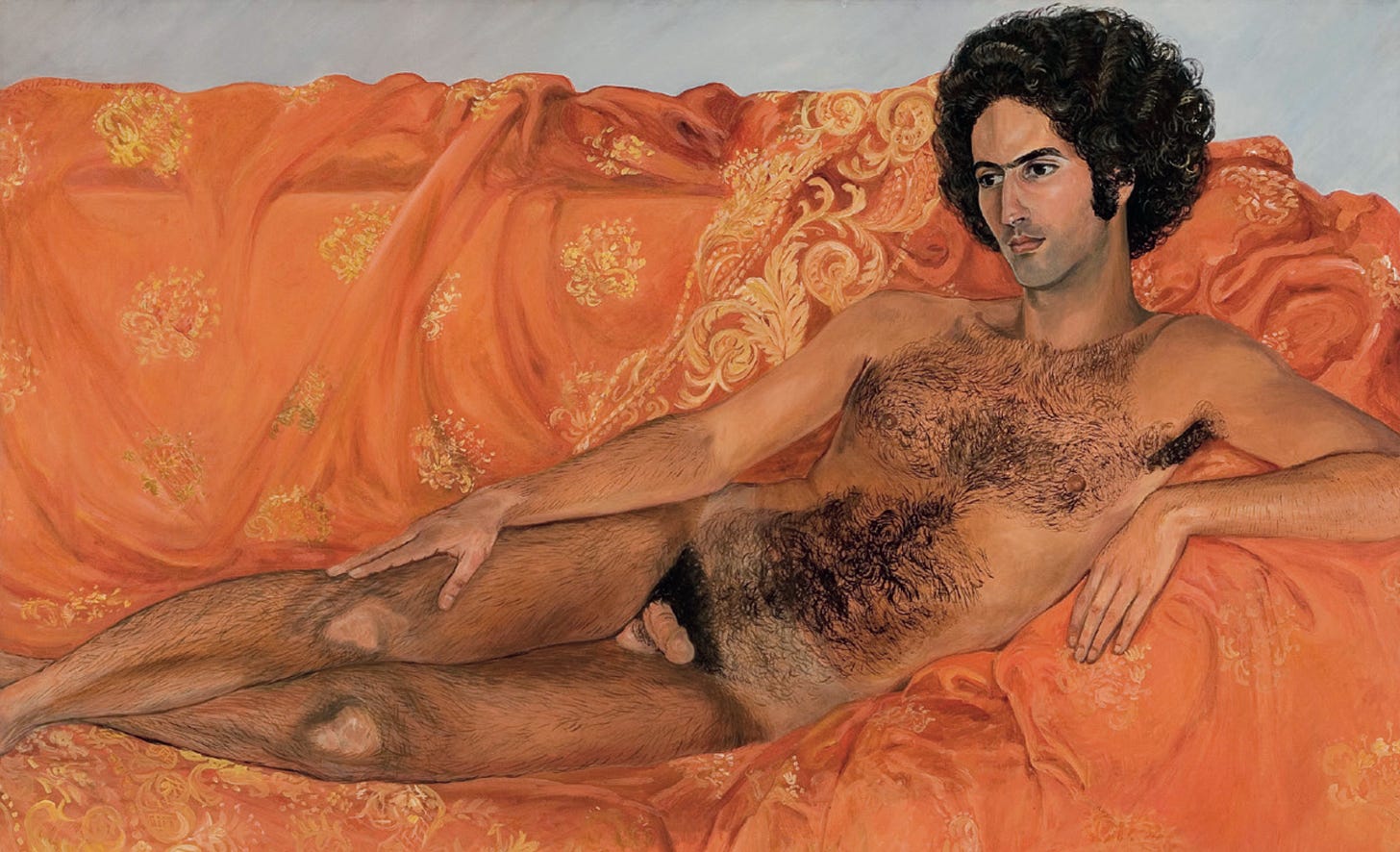
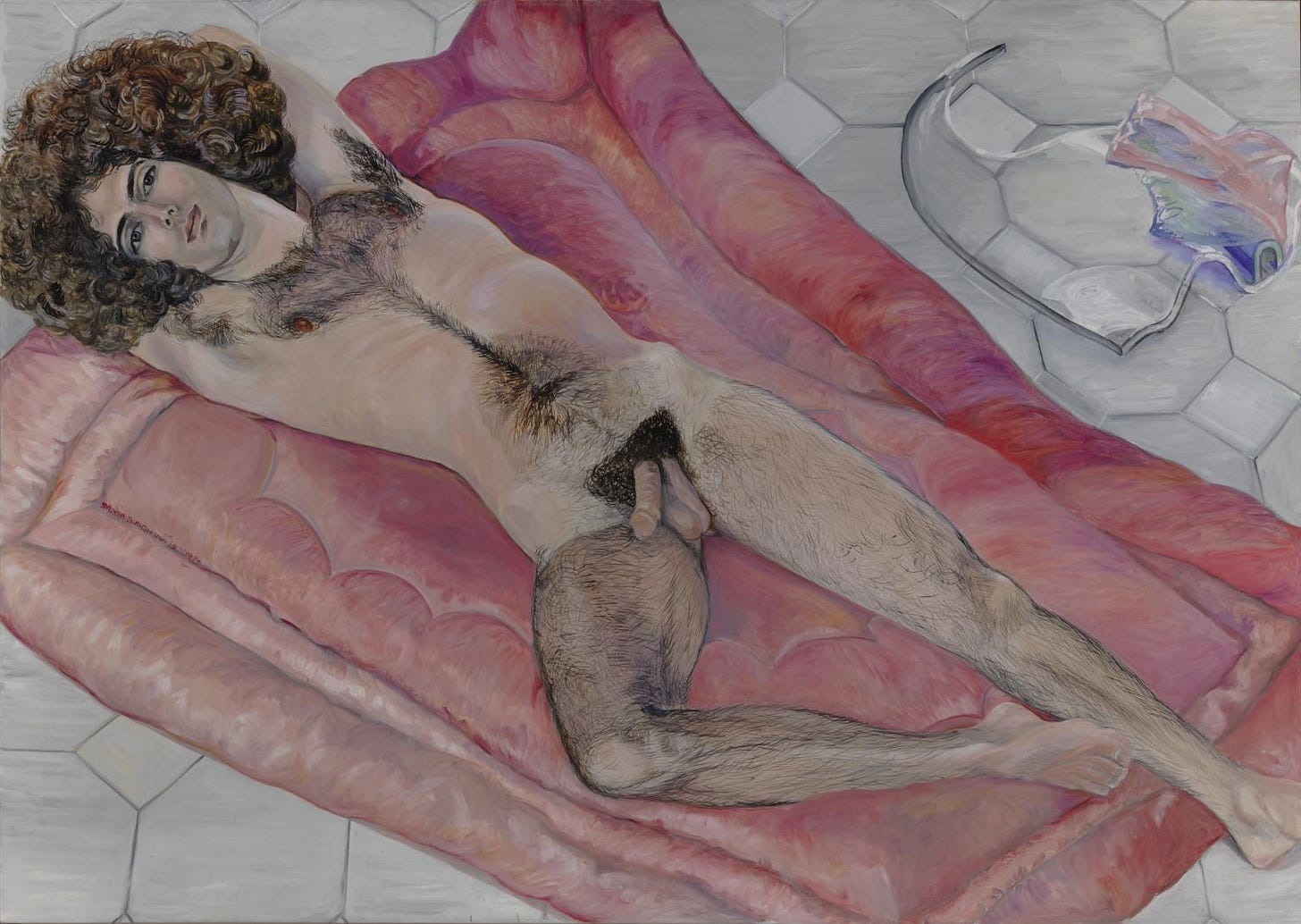

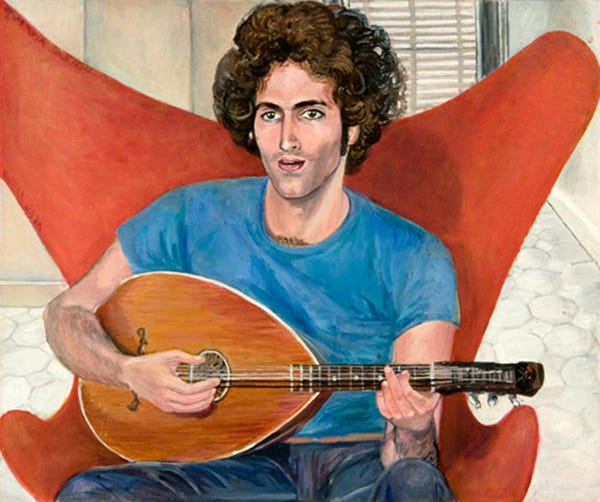
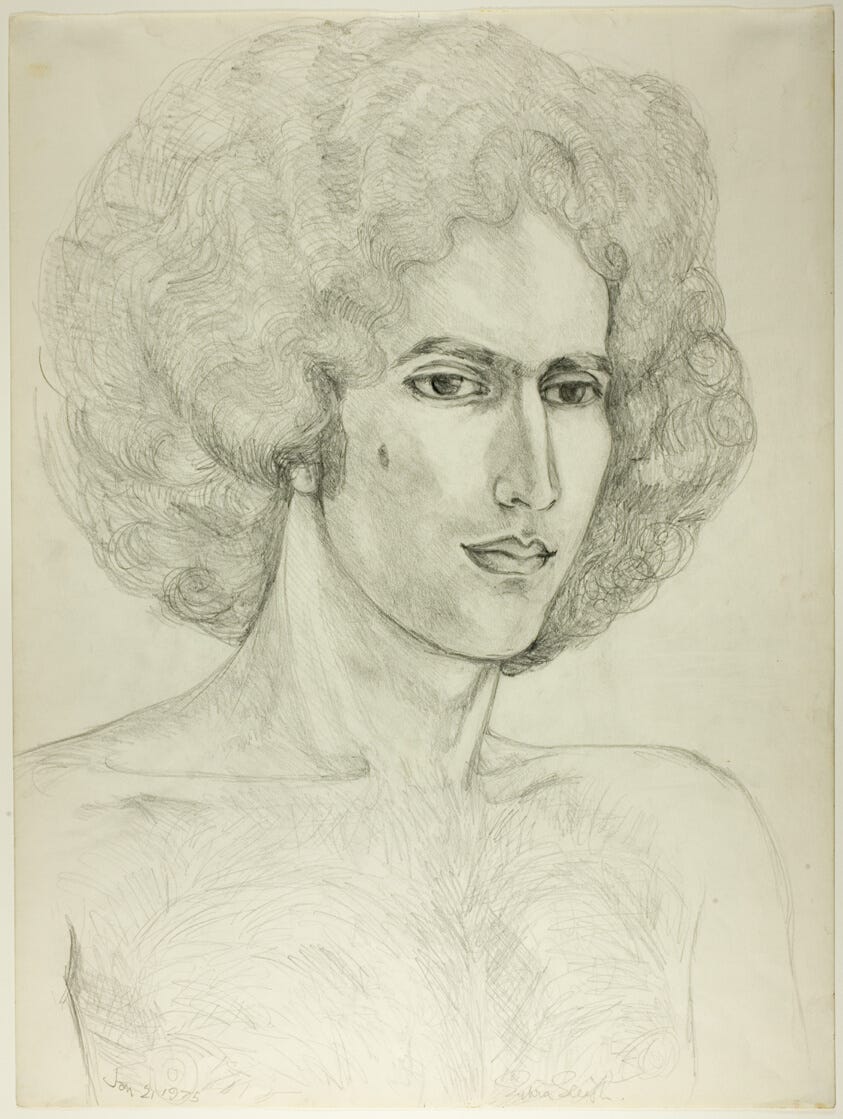


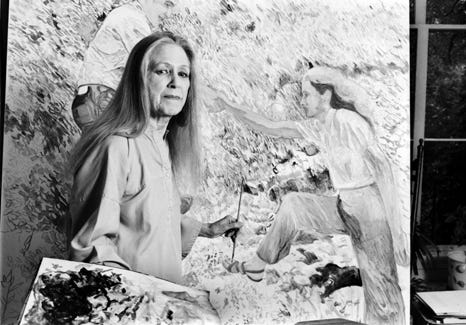
Reading Paul Rosano’s reflections on sitting for Sylvia Sleigh is incredibly moving. As a figurative artist who also models, I’m struck by the mutual respect and tenderness in their dynamic. Sleigh’s work with Paul still feels groundbreaking—recasting the male nude through a feminist lens, with care, curiosity, and vulnerability. Her portraits didn’t just subvert the gaze—they rewrote it. The way she painted men as seen, not staged, is something I think about often in my own practice. This interview is such a gift. Thank you for sharing it.
Loved this interesting post. I saw the Turkish Baths painting somewhere perhaps with another Neel show. Portraiture interests me so much so it’s a bit of pulling aside the veil! Hope to get to the gallery to hear the interviews. That would be special. These responses I hope underline your work as a great source of ongoing history. When you have time watch Pull My Daisy on YouTube. It features Alice and our dear friend David Amram as well as other beat poets.